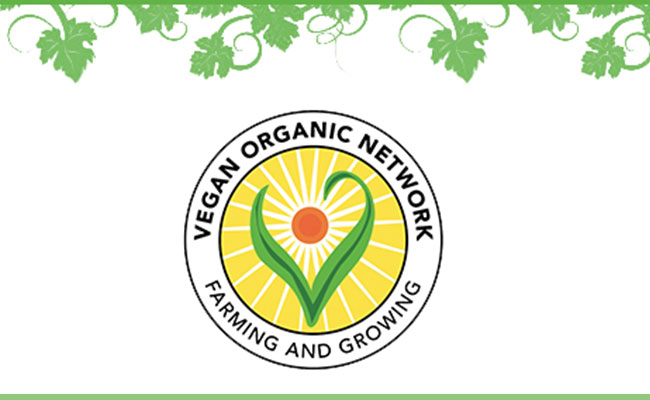Veganic farming, also known as stock-free farming, has emerged as a promising solution to address the pressing challenges of sustainability and animal welfare in modern agriculture.
This innovative approach combines the principles of veganism and organic farming to create a system that eliminates animal exploitation and promotes ecological balance.
By exclusively utilizing plant-based inputs and emphasizing regenerative practices, veganic farming offers a sustainable and ethical alternative to conventional commercial farming methods.
In this article, I look at the main principles of veganic farming, explore its differences from traditional agriculture, and highlight the significant environmental benefits it brings.

Principles of Veganic Farming
1. No Pesticides
Veganic farming relies solely on plant-based inputs for fertilization and soil management. Veganic farmers prioritize the use of natural and organic methods for pest management, focusing on prevention, cultural practices, and biological controls rather than relying on synthetic pesticides.
Here are some common alternatives and strategies used in veganic farming:
- Crop Rotation: Veganic farmers practice crop rotation, where different plant species are grown in a sequence over several seasons. This helps disrupt pest life cycles, reduces pest build-up, and prevents the spread of diseases. Crop rotation also balances nutrient demands and promotes healthier soil.
- Companion Planting: Veganic farmers employ companion planting, which involves growing compatible plant species together. Some plants naturally repel pests or attract beneficial insects that prey on pests, helping to control populations naturally. For example, planting marigolds alongside vegetables can deter certain pests.
- Physical Barriers: Protective physical barriers, such as row covers, netting, or insect-proof mesh, can be used to prevent pests from accessing crops while still allowing air and light to penetrate. This method is commonly used to protect plants from insect pests like aphids or caterpillars.
- Beneficial Insects: Veganic farmers encourage the presence of beneficial insects, also known as natural predators or parasitoids, to control pest populations. Ladybugs, lacewings, and praying mantises are examples of insects that feed on harmful pests. Attracting these beneficial insects can be achieved by providing suitable habitats, such as flowering plants or insectary strips.
- Cultural Practices: Good farming practices, such as proper irrigation, adequate spacing between plants, and timely removal of diseased plant material or weeds, help maintain plant health and reduce pest pressure. Keeping a clean and well-maintained growing environment minimizes potential pest habitats.
Commercial farming on the other hand, particularly conventional or industrial agriculture, utilizes a wide range of pesticides to protect crops from pests, diseases, and weeds.
Many commonly used pesticides have raised concerns due to their adverse effects on human health and the environment, such as Glyphosate.
2. Use Cover Cropping
Cover cropping is a practice where specific plant species, known as cover crops, are intentionally grown during periods when the main crop is not actively growing. These cover crops are typically fast-growing, non-cash crops that are cultivated for their numerous benefits to the soil and overall farm ecosystem.
The primary purpose of cover cropping is to protect and improve the soil. The cover crops act as a living blanket, covering the soil surface and preventing erosion caused by wind and water. This is particularly crucial during periods when the main cash crop is not present, such as during the winter or between harvests.
Cover crops also contribute to soil fertility and health. They are often chosen for their ability to fix nitrogen from the atmosphere, which enriches the soil with this vital nutrient. Leguminous cover crops, such as clover or hairy vetch, have a unique ability to form a symbiotic relationship with nitrogen-fixing bacteria, enhancing nitrogen availability for future crops.
Furthermore, cover crops improve soil structure and organic matter content. Their root systems penetrate the soil, creating channels that enhance water infiltration and drainage. As the cover crops decompose, they add organic matter to the soil, increasing its ability to retain moisture and nutrients.
Another significant benefit of cover cropping is weed suppression. By growing vigorously and shading the soil, cover crops compete with weeds for sunlight, water, and nutrients, reducing weed growth and minimizing the need for herbicides.
Additionally, cover crops support biodiversity and provide habitat for beneficial insects and organisms. They attract pollinators, predatory insects that control pests, and contribute to a more balanced and resilient ecosystem on the farm.
These practices ensure the fertility of the soil without relying on animal exploitation.
3. No-Till Farming
Veganic farming emphasizes regenerative practices that promote long-term soil fertility. These include mulching, no-till or reduced-till methods, and the use of natural amendments like compost and organic matter.
By nourishing the soil and fostering microbial activity, regenerative practices enhance nutrient availability, water retention, and carbon sequestration.
Veganic farmers generally adopt a no-till or reduced till approach to soil preservation.
No-till farming, also known as zero tillage or direct drilling, is an agricultural practice that involves planting crops without prior soil tillage or minimal disturbance of the soil.
Unlike conventional tillage methods that involve plowing or disking to prepare the soil, no-till farming aims to preserve the natural structure and composition of the soil by avoiding mechanical disturbance.
In no-till farming, the previous crop residues or cover crops are left on the soil surface as a protective layer. This residue acts as a barrier, reducing soil erosion caused by wind and water. It also helps to retain moisture in the soil, reducing water evaporation and enhancing overall water conservation.
The primary objective of no-till farming is to promote soil health and productivity. By avoiding tillage, the soil structure remains intact, preserving its aggregates and pore spaces. This allows for better water infiltration, root penetration, and nutrient retention. The undisturbed soil also helps to prevent compaction, which can inhibit root growth and reduce crop yields.
No-till farming offers several benefits compared to conventional tillage methods. It helps to conserve soil moisture, making it particularly valuable in regions with limited water availability. The presence of crop residues on the soil surface also aids in weed suppression by blocking sunlight and inhibiting weed seed germination. Consequently, farmers can reduce or eliminate the need for herbicides or mechanical weed control methods.
Moreover, no-till farming contributes to mitigating climate change. By minimizing soil disturbance, carbon stored in the soil, known as soil organic carbon, is better preserved. This helps to prevent the release of carbon dioxide into the atmosphere, acting as a natural carbon sink and contributing to carbon sequestration. No-till practices also reduce fuel consumption and greenhouse gas emissions associated with machinery use and soil disturbance.
4. Use Green Manure
Green manure refers to the practice of growing specific plant species or cover crops (see below) and then incorporating them into the soil while they are still green and actively growing. These crops are grown with the purpose of improving soil fertility, structure, and organic matter content.
Green manure crops are typically chosen for their ability to fix nitrogen from the atmosphere, scavenge and recycle nutrients, suppress weeds, and enhance soil health. They are often fast-growing, with vigorous root systems that penetrate the soil and contribute to its structure. Common examples of green manure crops include legumes such as clover, alfalfa, vetch, and peas, as well as grasses like ryegrass, oats, or barley.
The practice of green manuring involves sowing these cover crops in fallow fields or during periods when the main cash crop is not actively growing. The cover crops are allowed to grow for a specific period, usually several weeks to a few months, depending on the crop and desired benefits. Once the cover crops reach an appropriate stage of growth, they are either mowed, chopped, or tilled into the soil, where they decompose and release their nutrients and organic matter.
Green manuring is a sustainable practice that promotes soil fertility, reduces the reliance on synthetic fertilizers, and supports long-term soil health.
5. Use Green Composting
Green composting, also known as green waste composting or green material composting, is a process of converting organic waste materials, primarily consisting of plant-based or “green” materials, into nutrient-rich compost. It is an environmentally friendly method of recycling organic waste and creating a valuable soil amendment.
Green composting primarily involves the decomposition of plant-based materials such as grass clippings, leaves, prunings, weeds, and other non-woody garden and yard waste. These materials are collectively referred to as “green” due to their high nitrogen content, which contributes to the overall nutrient balance of the compost.
Ideally, veganic composting materials should be veganic, or at least organic. For example, not not using non-organic vegetable and fruit scraps
The green composting process typically begins with the collection and segregation of organic waste materials. These materials are then piled or stacked in designated composting areas, often with layers of dry carbon-rich materials such as wood chips, straw, or shredded paper to balance the carbon-to-nitrogen ratio and aid in decomposition. The compost piles are periodically turned or aerated to provide oxygen to the microbial organisms responsible for the decomposition process.
As the organic materials decompose, heat is generated, reaching temperatures that promote the breakdown of organic matter and the destruction of pathogens and weed seeds. The composting process is facilitated by microorganisms, such as bacteria, fungi, and earthworms, which break down the organic matter into humus—a stable, dark, and crumbly material that resembles soil.
Green composting promotes nutrient recycling, soil amendment, waste reduction, and environmental sustainability.
6. Promote Biodiversity and Soil Health
Soil health and biodiversity play crucial roles in veganic farming, as they are fundamental pillars for sustainable and thriving agricultural systems.
Soil health refers to the overall condition and functionality of the soil ecosystem. Healthy soils are characterized by high organic matter content, good structure, nutrient availability, water-holding capacity, and a diverse community of beneficial organisms.
Biodiversity refers to the variety of living organisms in a given ecosystem. In veganic farming, biodiversity plays a critical role in promoting ecological balance and resilience, helping to maintain pest and disease control, promote pollination, and improve the soil food web (the complex network of microorganisms, earthworms, nematodes, and other organisms that contribute to nutrient cycling, organic matter decomposition, and overall soil fertility).
By promoting soil health and biodiversity, veganic farming aims to create sustainable and resilient agricultural systems that minimize reliance on external inputs and support long-term ecological balance. It recognizes that healthy soils and diverse ecosystems are the foundation for productive and environmentally conscious food production.
Veganic Vs Commercial Farming
Veganic farming stands in stark contrast to conventional commercial farming practices. Here are some key differences:
Animal Exploitation
Commercial farming usually involves the use of animals for various purposes, including manure, labor, and meat production. In veganic farming, animals are not utilized or exploited in any way, aligning with the ethical principles of veganism.
Chemical Inputs
Commercial farming relies heavily on synthetic fertilizers, pesticides, and herbicides to maximize yields. Veganic farming, on the other hand, avoids these inputs, focusing instead on natural methods of pest control and soil fertility.
This reduces the environmental impact of agricultural practices and promotes healthier food production.
Sustainable Soil Management
While commercial farming degrades soil health over time due to excessive tilling and chemical use, veganic farming prioritizes sustainable soil management.
By emphasizing organic matter, biodiversity, and regenerative practices, veganic farmers promote soil fertility and the long-term viability of their farms.
Environmental Benefits of Veganic Farming
Reduced Carbon Footprint
Veganic farming contributes to lower greenhouse gas emissions compared to conventional agriculture. By eliminating the use of animal agriculture and reducing chemical inputs, veganic practices reduce the carbon footprint associated with food production.
Water Conservation
Veganic farming utilizes water more efficiently by promoting healthy soil structure and water retention. The absence of synthetic fertilizers and pesticides reduces the risk of water pollution, ensuring the protection of water resources and aquatic ecosystems.
Preservation of Ecosystems
Veganic farming promotes biodiversity through practices like crop rotation and companion planting.
By providing a habitat for beneficial insects and organisms, veganic farms help maintain a balanced ecosystem, reducing the reliance on chemical pest control methods and preserving natural habitats.
Soil Health and Carbon Sequestration
Through regenerative practices, veganic farming enhances soil health and fertility. Healthy soils act as carbon sinks, sequestering carbon dioxide from the atmosphere and mitigating climate change.
Conclusion
Veganic farming represents a sustainable and ethical approach to agriculture that prioritizes plant-based inputs, biodiversity, and regenerative practices. By eliminating animal exploitation and reducing chemical inputs, veganic farmers contribute to a healthier and more environmentally friendly food system.
The principles of veganic farming offer a viable alternative to conventional commercial farming, addressing the concerns of animal welfare, soil degradation, and environmental impact.
By adopting veganic farming practices, we can promote a more sustainable and compassionate agricultural system. Consumers can support this movement by choosing veganic products and supporting local farmers who adhere to these principles. Additionally, policymakers and agricultural institutions play a crucial role in encouraging and incentivizing the transition to veganic farming methods.
As we strive for a more sustainable future, veganic farming stands as a shining example of how we can cultivate food while respecting the environment and the well-being of all living beings. It is a pathway towards a regenerative and ethical food system that nourishes both our bodies and our planet.
You can find out more about veganic farming practices on the Vegan Organic website.




Leave a Reply